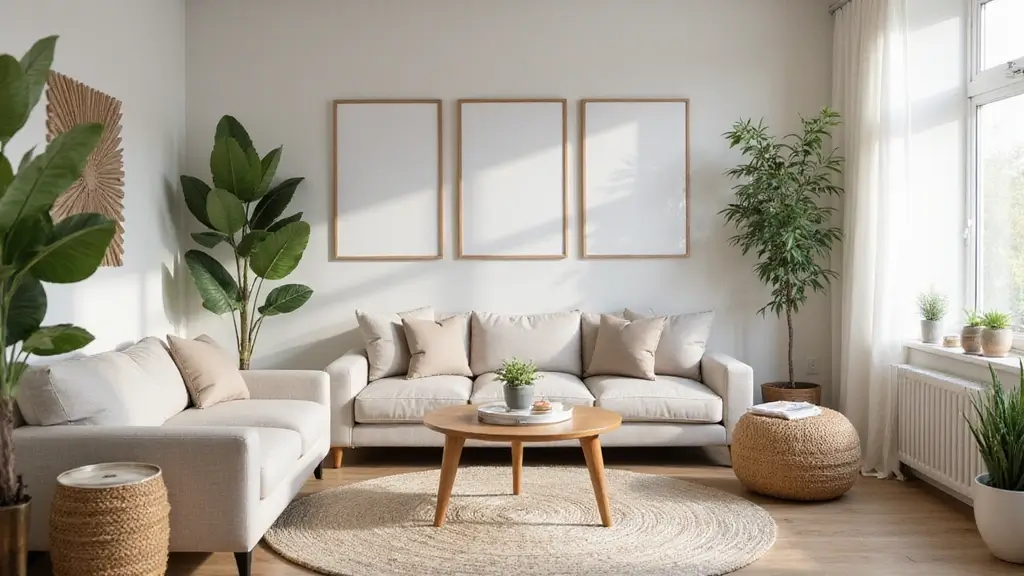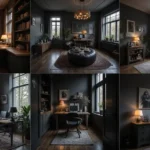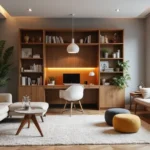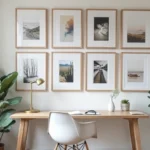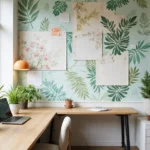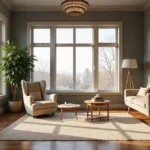Creating a calming therapy office is all about the right decor choices that promote tranquility and comfort.
When clients walk into a space that feels peaceful, it can set the tone for their entire experience. From the furniture to the colors and the art on the walls, every detail counts.
In this list, you’ll find 15 decor ideas that meld minimalist aesthetics with soothing vibes, ensuring your therapy office feels like a haven for both you and your clients.
1. Soothing Color Palettes
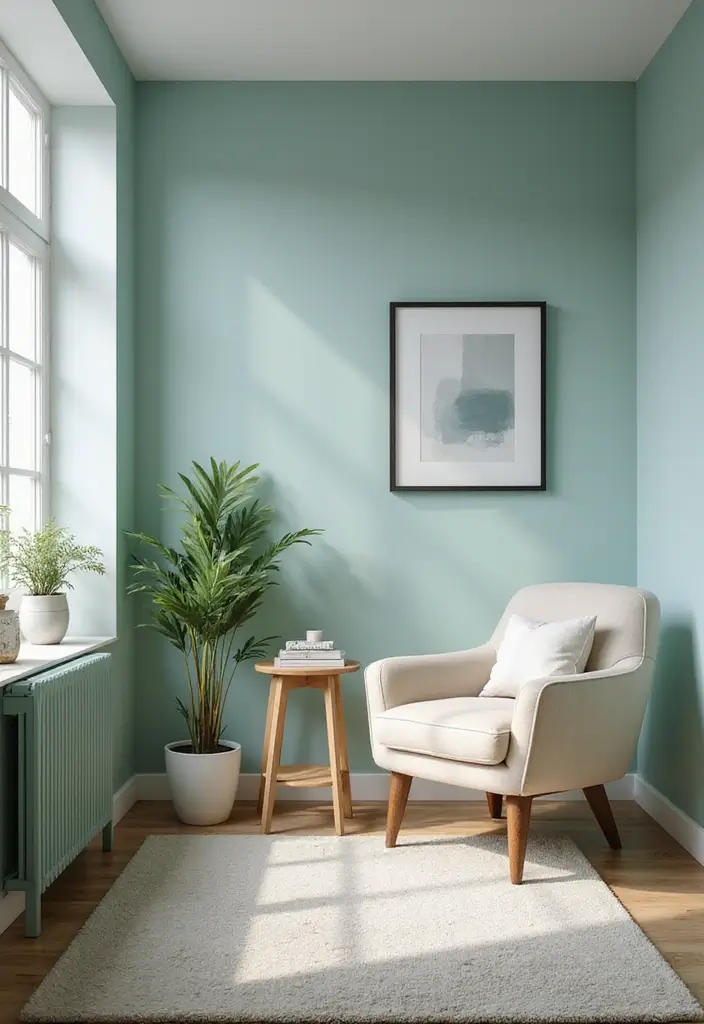
The foundation of a calming therapy office starts with a cohesive color palette.
Opt for soft blues, gentle greens, or muted earth tones that evoke feelings of serenity. Paint the walls in these colors or choose calming wallpaper patterns that bring the outdoors in.
Consider these tips for selecting your color scheme:
– Utilize cool colors to promote relaxation; warm colors can stimulate energy.
– Stick to two or three main colors to maintain a minimalist feel.
– Use lighter shades to make the space feel more open and airy.
– Incorporate natural wood tones for warmth and grounding.
A well-chosen color palette can drastically change the energy of your office, making it inviting and serene.
A calming therapy office begins with soothing colors—think soft blues and gentle greens! Stick to a minimalist palette for a serene space that invites relaxation and fosters connection.
2. Cozy Furniture
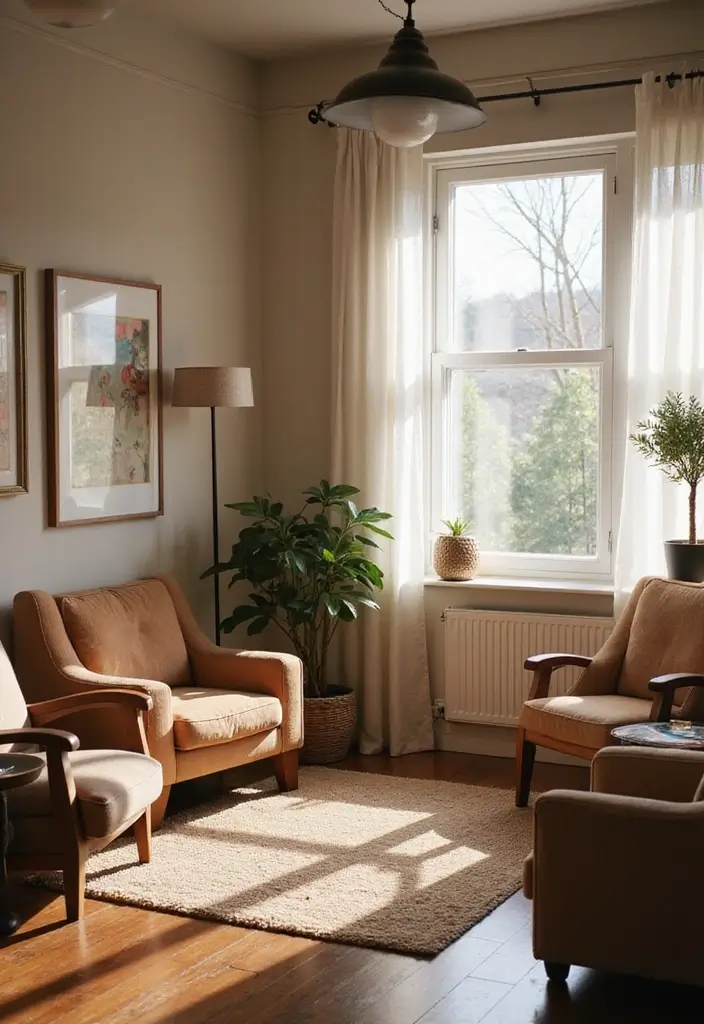
Furniture can make or break the comfort level of your therapy office.
Choose pieces that not only look good but also feel inviting and warm. Plush armchairs, soft couches, and supportive chairs are essential.
Here are some suggestions for selecting furniture:
– Look for pieces with rounded edges to create a softer appearance.
– Consider multi-functional furniture, like a sofa bed for added flexibility.
– Use textured fabrics such as linen or cotton for a cozy touch.
– Ensure chairs have ample cushioning to provide comfort during longer sessions.
Ultimately, the right furniture will create a warm embrace that makes clients feel at ease.
3. Calming Wall Art
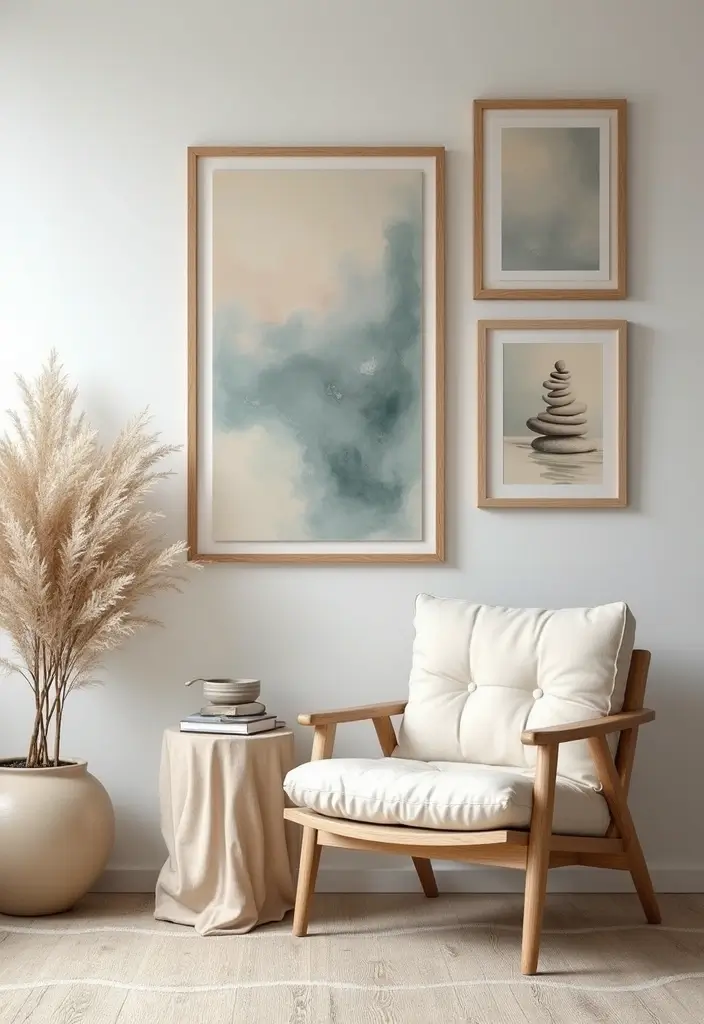
Art can play a significant role in establishing atmosphere.
Choose wall art that reflects tranquility—abstract pieces in calming colors or nature-inspired photographs can do wonders for the mood.
Here are ways to select and place art:
– Look for pieces that evoke positive emotions and thoughts.
– Group smaller frames together for a gallery effect without overwhelming the space.
– Make sure the art is hung at eye level for optimal engagement.
– Consider rotating the art seasonally to keep the space fresh.
Calming wall art can inspire reflection and enhance the therapeutic experience.
4. Nature-Inspired Accents
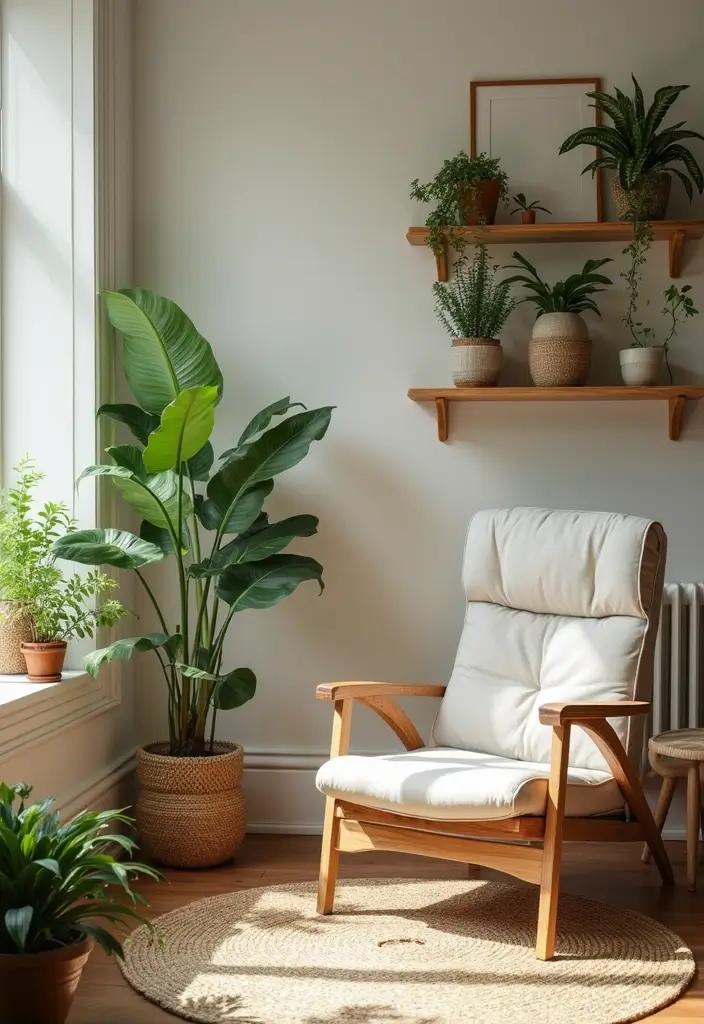
Bringing the outdoors inside can significantly enhance the calming quality of your therapy office.
Incorporate nature-inspired decor through plants, natural materials, or artworks depicting landscapes.
Here’s how to do it:
– Use houseplants like snake plants or pothos for easy maintenance and air purification.
– Choose decor items made from wood, stone, or bamboo to add a natural touch.
– Incorporate nature-themed prints or photographs in your wall decor.
– Consider a nature-themed color palette to tie it all together.
These touches not only beautify the space but also promote a sense of well-being.
5. Soft Lighting
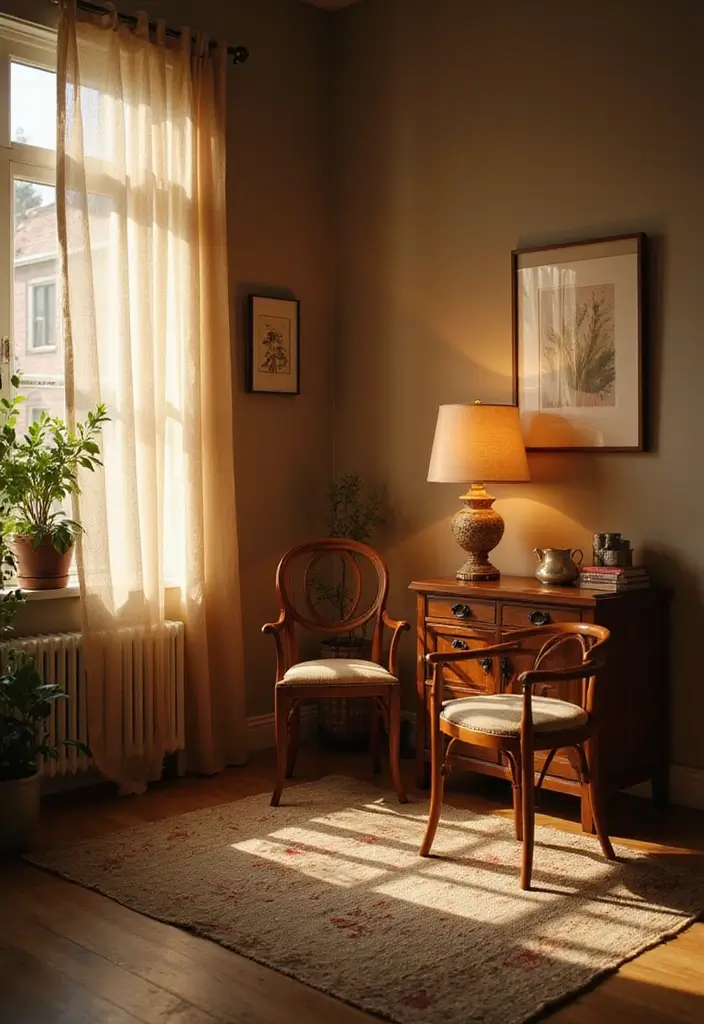
Lighting sets the mood in any environment, and your therapy office is no exception.
Aim for soft, warm lighting that doesn’t feel harsh or clinical. Consider using a combination of natural light, lamps, and dimmers.
Here are some tips for lighting:
– Install dimmable fixtures to adjust brightness based on the time of day and mood.
– Use floor or table lamps with soft bulbs for a cozy feel.
– Avoid fluorescent lights, as they can create a sterile atmosphere.
– Utilize light curtains to allow natural light while maintaining privacy.
The right lighting can create a calming ambiance and enhance the comfort level of your office.
Soft lighting can turn a clinical space into a cozy haven. Embrace warm hues and dimmers to create a calming therapy office that invites connection and comfort.
6. Textiles for Comfort
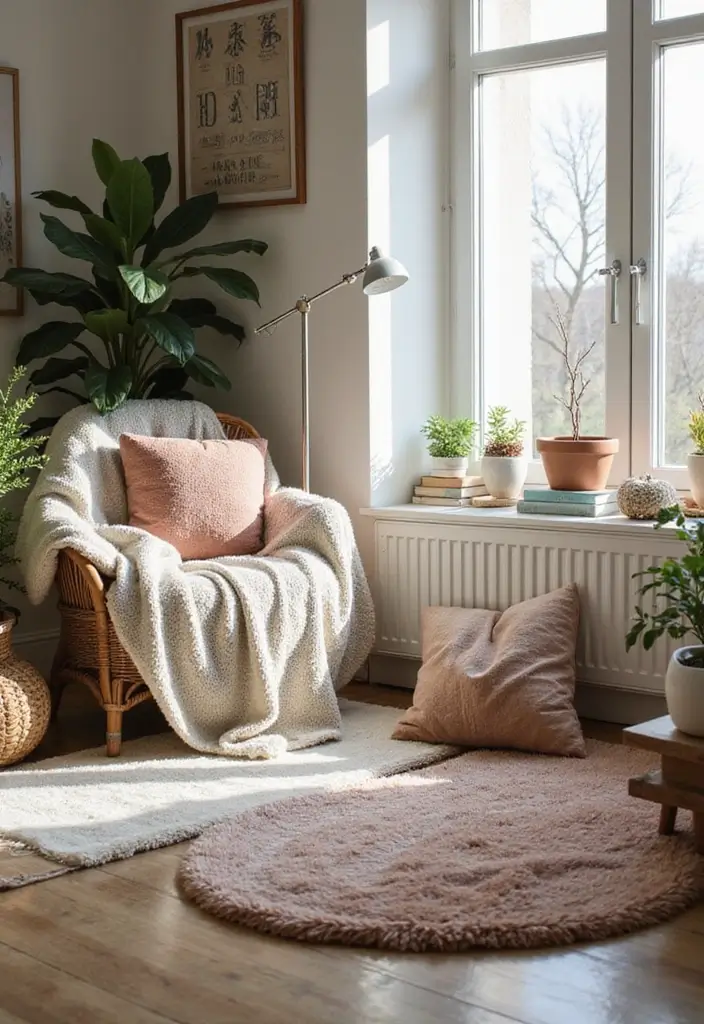
Textiles add warmth and comfort to a space, making it feel more inviting.
Consider layering different textures with cushions, throws, and rugs. These elements can soften the overall look of the room.
When choosing textiles, keep these points in mind:
– Opt for hypoallergenic materials to cater to all clients.
– Mix textures like knits, velvets, and cotton for variety without chaos.
– Use large area rugs to define spaces and provide a cozy feel.
– Add throw pillows in inviting colors to enhance visual interest.
Textiles can turn a sterile room into a cozy sanctuary, encouraging clients to unwind.
7. Minimalist Displays
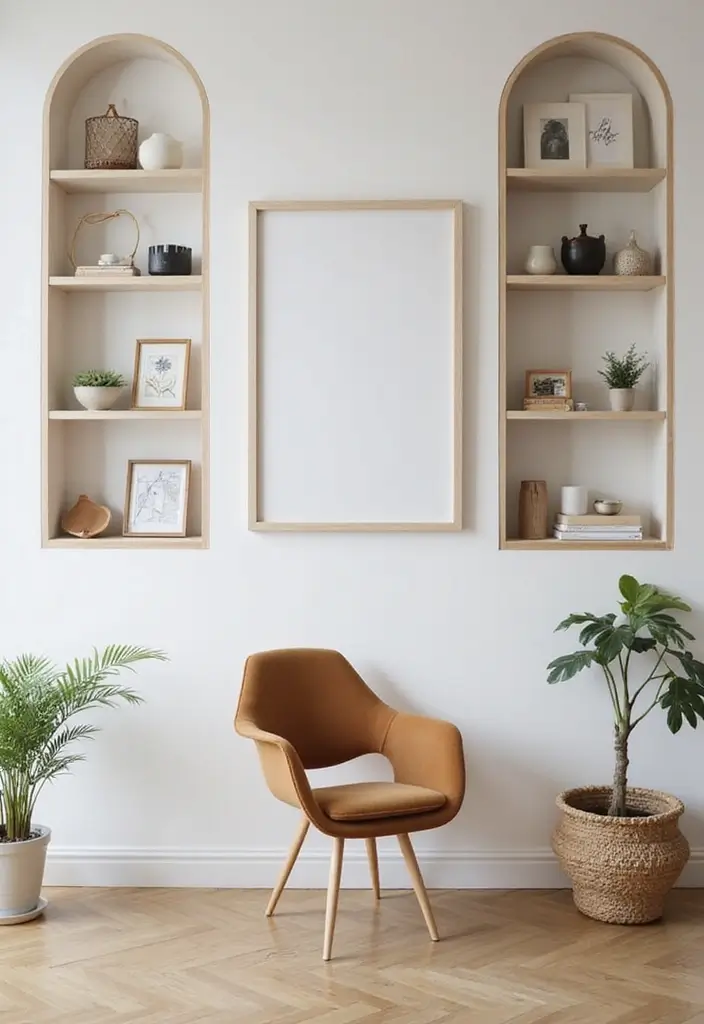
In a therapy office, clutter can lead to stress and distraction.
Adopt a minimalist approach to decor by selecting a few key pieces that resonate with the therapeutic atmosphere you want to create.
Consider these minimalism tips:
– Limit decorative items to a few well-chosen pieces that inspire calm.
– Use open shelving to display a curated selection of books and plants.
– Choose storage solutions that blend into the decor, keeping the space tidy.
– Ensure everything has a designated place to avoid clutter.
A minimalist approach promotes focus and clarity, supporting the therapeutic process.
8. Aromatherapy Elements
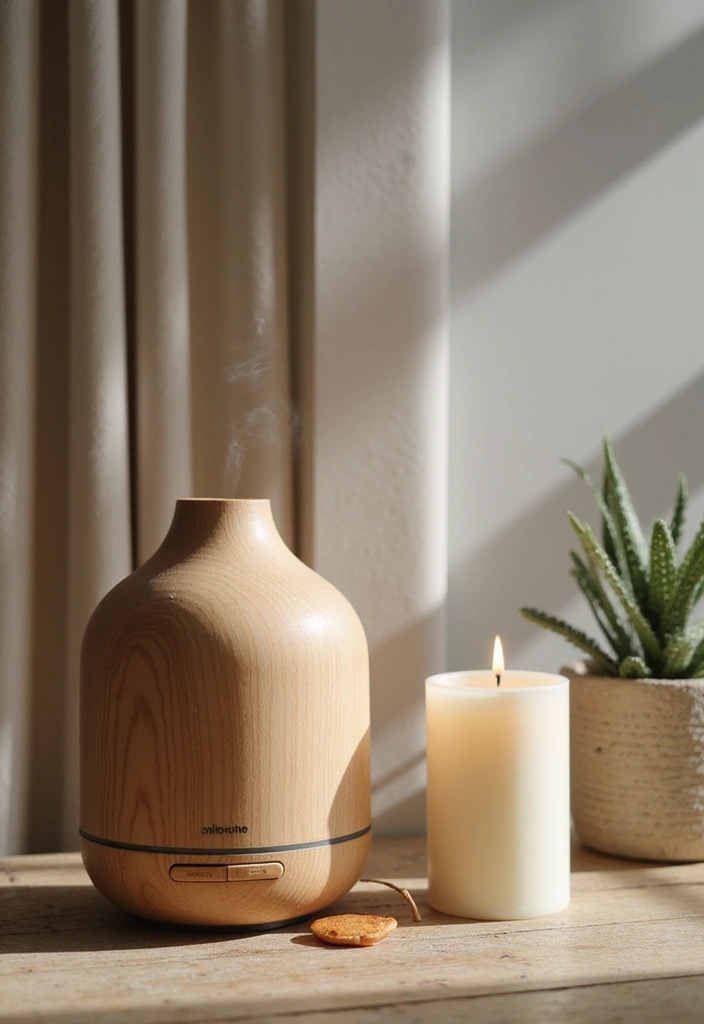
Scent plays a powerful role in creating a calming environment.
Incorporate aromatherapy through diffusers, scented candles, or natural incense. This can have a profound impact on mood and stress levels.
Here’s how to use aromatherapy:
– Select essential oils known for their calming effects, like lavender or chamomile.
– Use reed diffusers for a constant, subtle scent.
– Avoid overpowering scents that could be jarring.
– Consider client preferences and allergies when selecting scents.
Aromatherapy can enhance the sensory experience of your therapy sessions, promoting relaxation and comfort.
9. Personal Touches
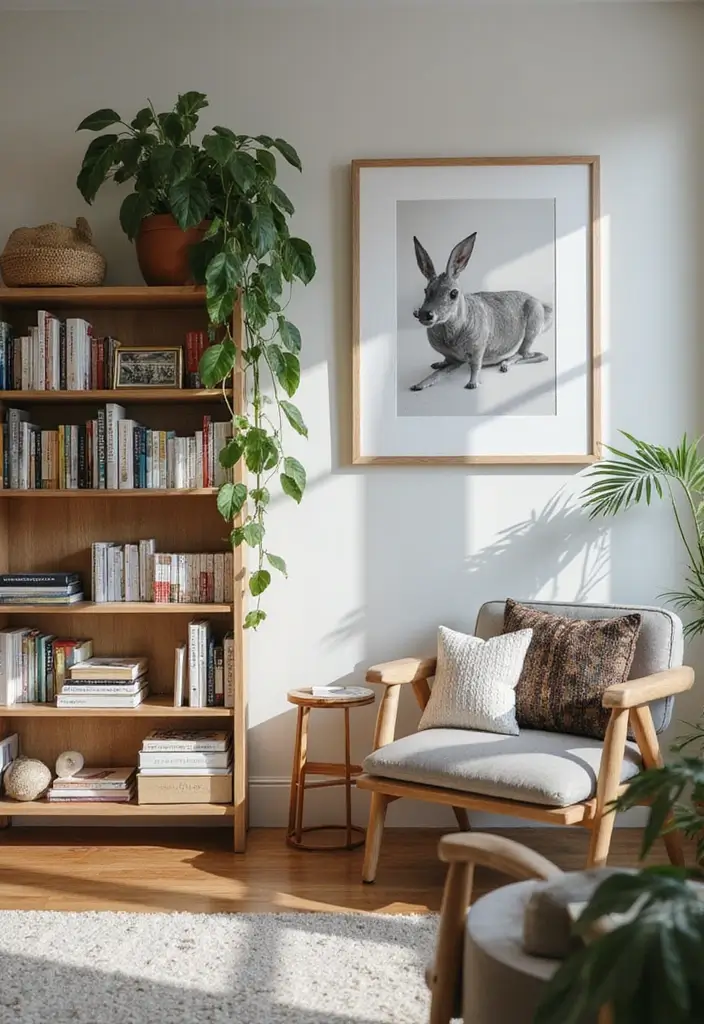
Adding personal touches can make a therapy office feel more welcoming and relatable.
Display items that reflect your personality, such as books, photos, or meaningful souvenirs.
Here are some ideas for personalizing your space:
– Use a bookshelf to showcase your favorite books or resources relevant to therapy.
– Include framed personal photographs that inspire positivity.
– Choose decor that tells a story or represents your journey.
– Be mindful of adding too much; the goal is to create connection, not distraction.
Personal touches can bridge the gap between therapist and client, fostering a sense of trust.
10. Functional Layout
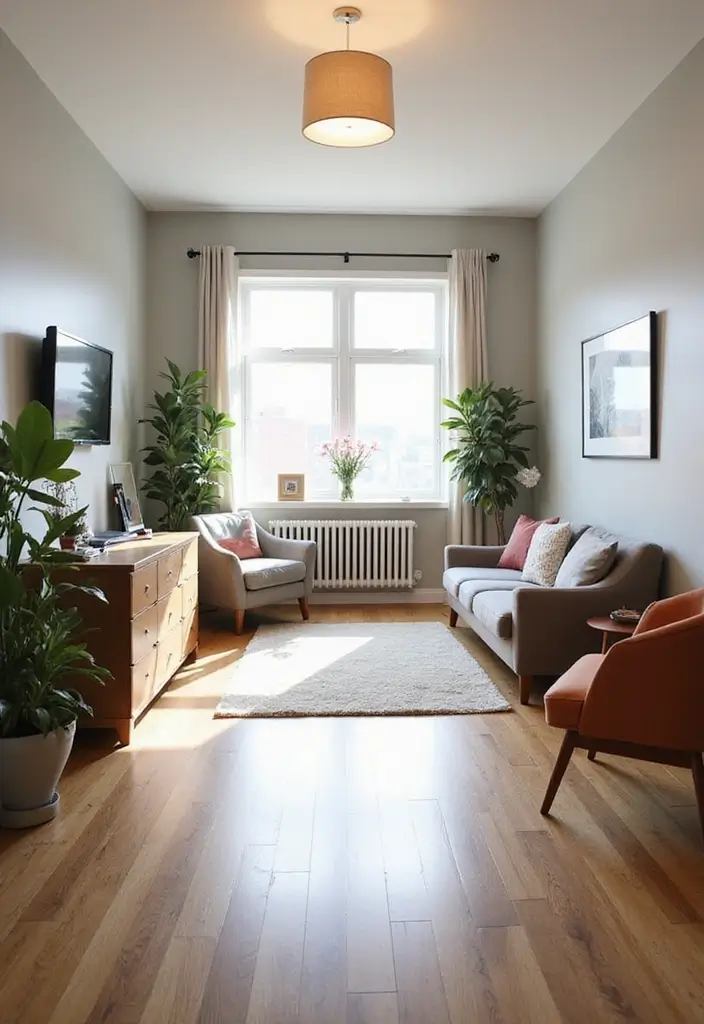
The layout of your therapy office is critical to its functionality and flow.
Ensure that the arrangement promotes ease of movement while also providing a comfortable setting for clients.
Consider these layout strategies:
– Place seating in a circular or semi-circular arrangement to foster openness.
– Utilize large furniture to create zones within the space, like a reading nook or discussion area.
– Ensure pathways are clear to avoid feelings of confinement.
– Account for accessibility needs to allow all clients to feel at home.
A thoughtful layout can enhance the therapeutic experience by promoting safety and comfort.
A well-thought-out layout can turn your therapy office into a sanctuary. Create flow and comfort, and watch your clients relax into the healing process.
11. Calming Sounds
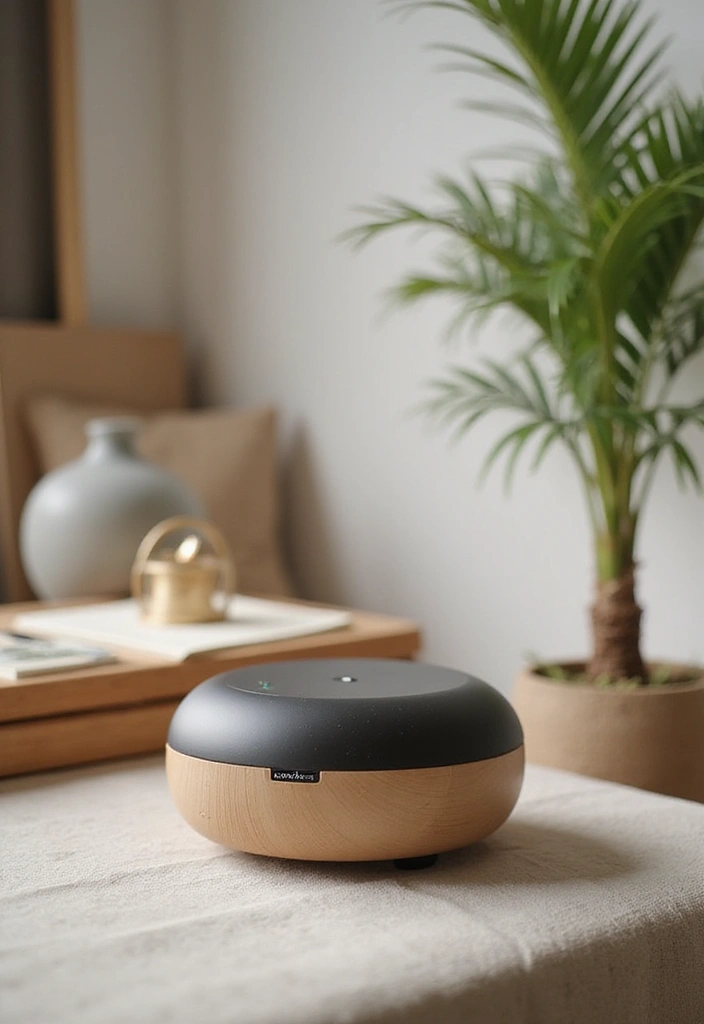
Sound can significantly influence mood and relaxation levels.
Incorporate calming sounds through soft background music or nature sounds to create an immersive experience.
You can achieve this by:
– Using a sound machine with nature sounds like rain or ocean waves.
– Curating a playlist of soft instrumental music that promotes relaxation.
– Ensuring sound levels are low enough to be a gentle backdrop but not distracting.
– Encouraging clients to share any sound preferences they may have.
Creating a peaceful auditory environment can enhance overall comfort and tranquility.
12. Mindfulness Accessories
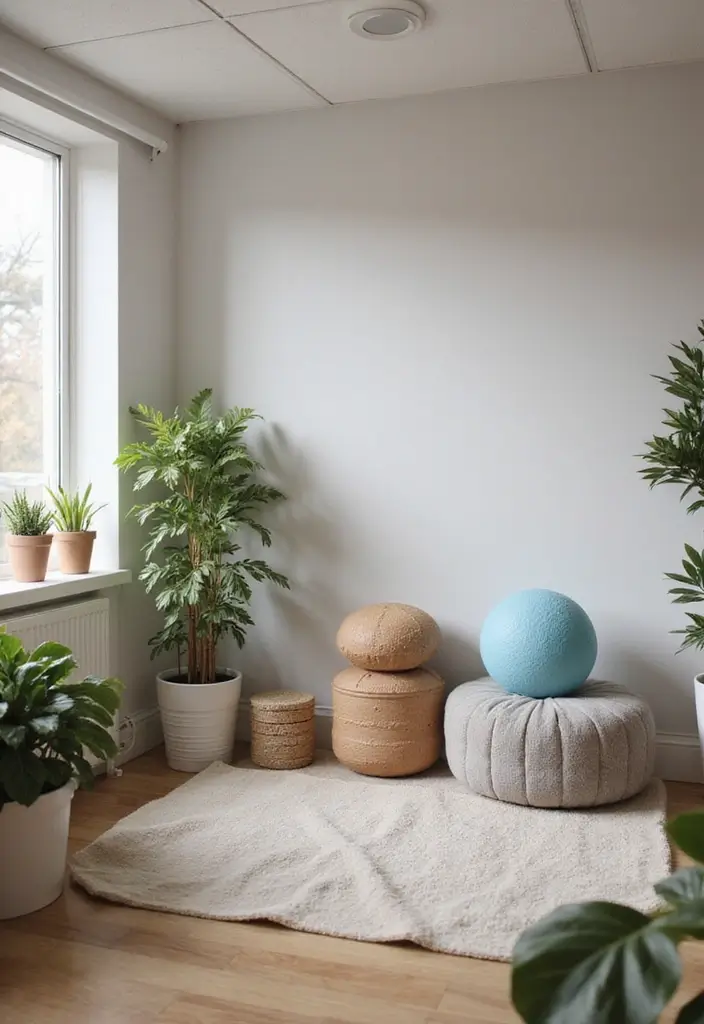
Mindfulness accessories can be great additions to a therapy office, encouraging clients to engage in grounding techniques.
Consider items like stress balls, fidget toys, or meditation cushions.
Here are some mindfulness accessory ideas:
– Use stress balls or fidget spinners to help anxious clients focus.
– Provide cushions for seated meditation or reflection exercises.
– Incorporate items like sand trays for tactile engagement during sessions.
– Be mindful of the available space so these accessories don’t clutter.
These small additions can make a big difference in how clients feel during their time with you.
13. Organized Resources
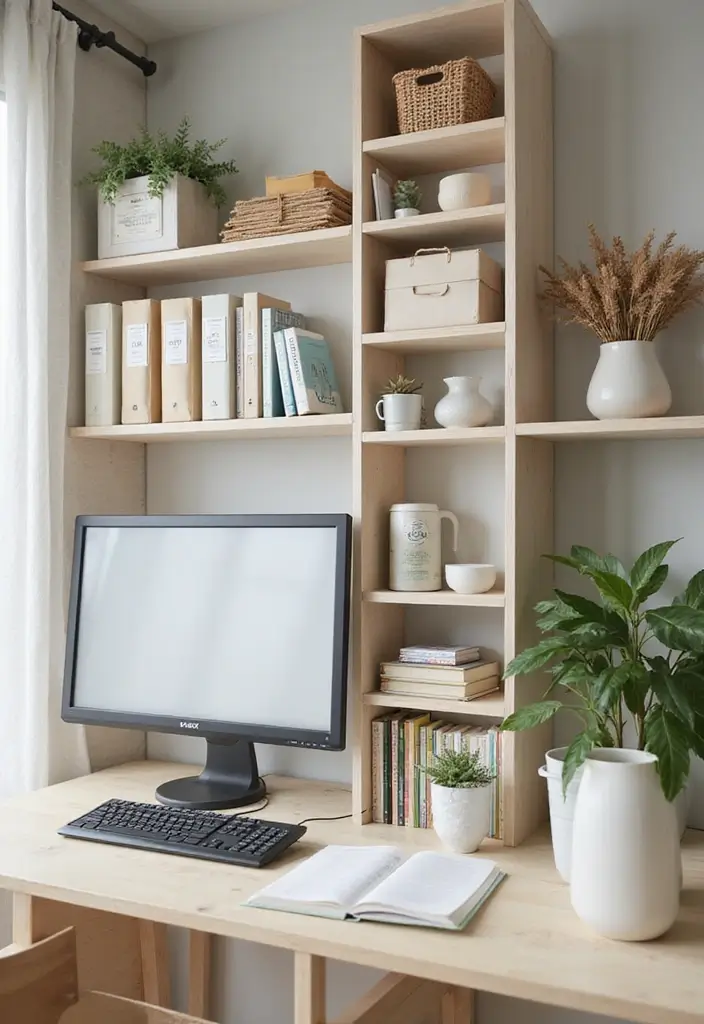
Keeping resources organized is essential in maintaining a professional and calming environment.
Create designated areas for books, worksheets, or other materials clients may need.
Consider these organizational tips:
– Use attractive baskets or storage boxes to hold supplies neatly.
– Label containers for easy access while keeping the aesthetic minimalist.
– Designate a specific shelf for current resources or tools relevant to therapy.
– Regularly declutter and refresh materials to keep the space inviting.
An organized space can enhance the client experience by making resources accessible and the environment feel more manageable.
14. Seasonal Decor
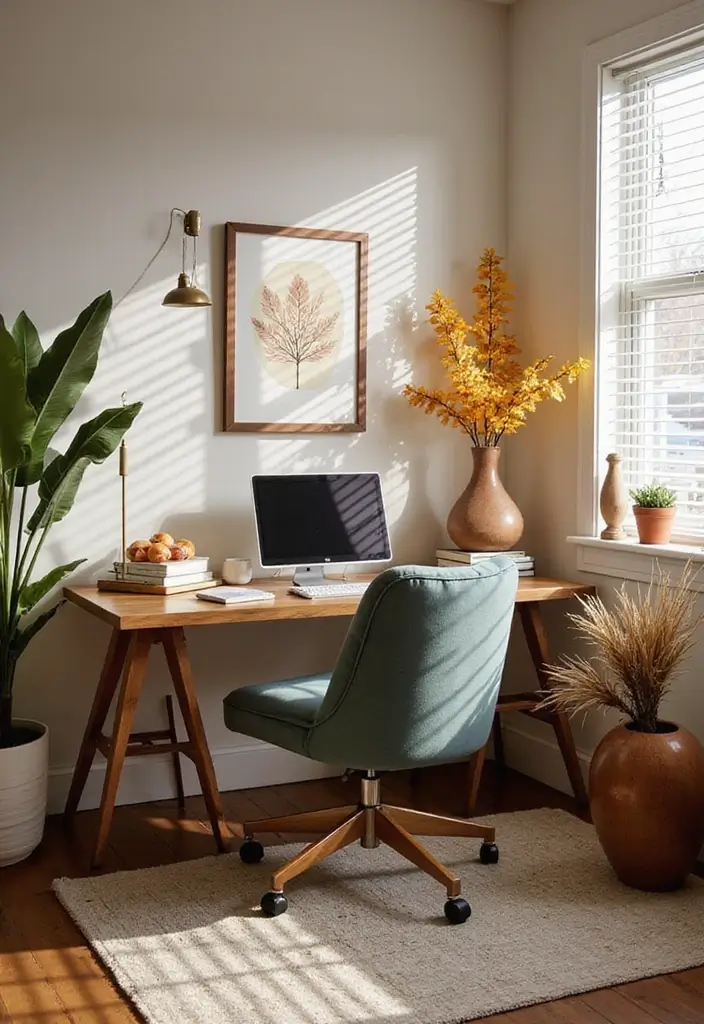
Switching up decor seasonally can refresh a therapy office and keep it feeling dynamic.
Consider simple changes that reflect the current season, like using different color palettes or incorporating seasonal plants.
Here are some ideas for seasonal decor:
– Use warm colors and cozy textures in fall, while opting for light, airy decor in spring.
– Add seasonal flowers or plants that reflect the time of year.
– Change throw pillows and rugs to reflect seasonal colors or patterns.
– Keep it simple to avoid visual clutter while still capturing the season’s spirit.
Seasonal decor can create a sense of movement and change, resonating with clients in different emotional states.
A fresh seasonal touch can turn your therapy office into a sanctuary! Embrace the changing colors and textures to keep your space dynamic and inviting throughout the year.
15. Comfortable Entryway
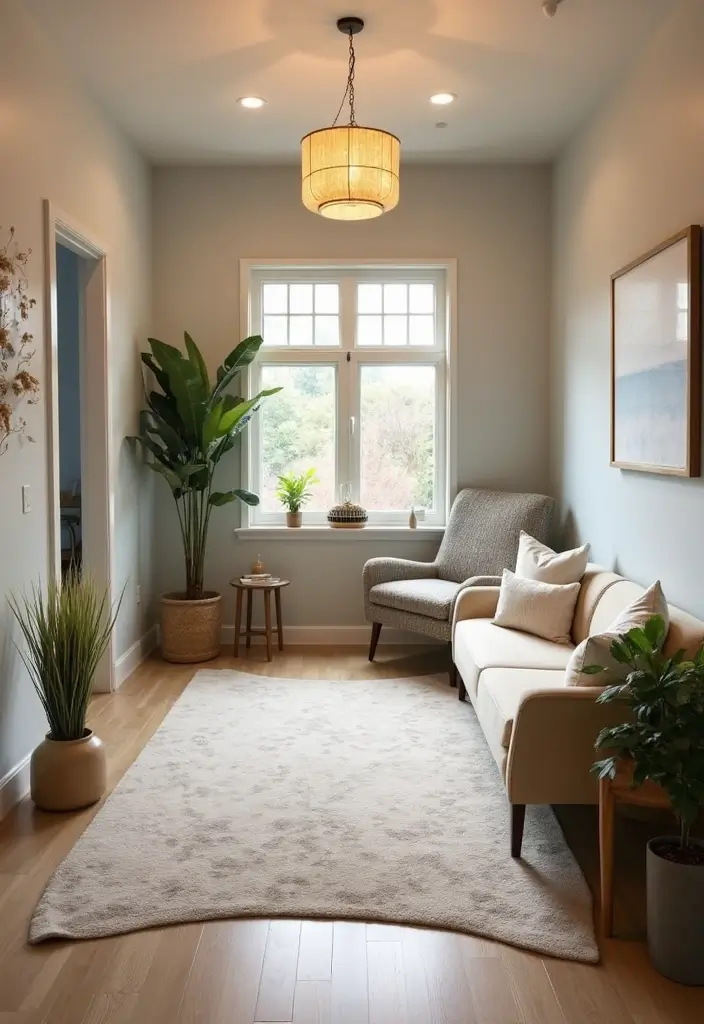
The entryway sets the first impression, so creating a welcoming and comfortable entrance is vital.
Incorporate seating, calming decor, and a tidy system to make clients feel at ease as they arrive.
Here are tips for a comfortable entryway:
– Use a small bench or chairs where clients can sit while waiting.
– Keep decor minimal but inviting, perhaps a small plant or artwork.
– Ensure the area is well-lit and free of clutter.
– Provide resources like magazines or pamphlets related to therapy without overwhelming the space.
The entryway should serve as a gentle transition into the therapeutic space, welcoming clients warmly.
Conclusion
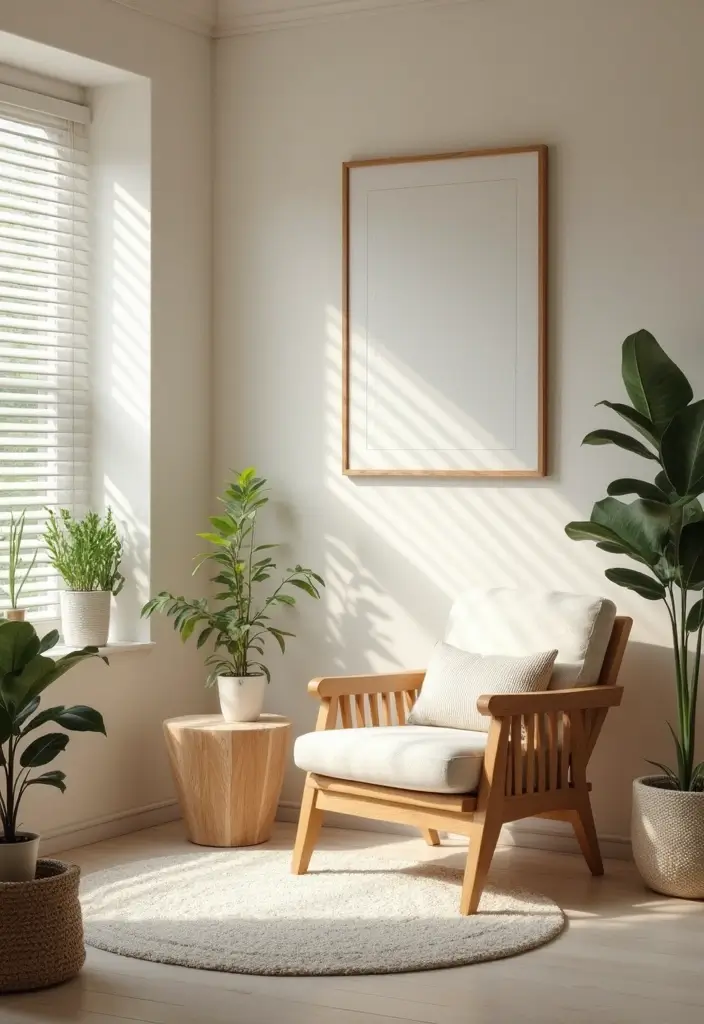
Crafting a calming therapy office is about thoughtful choices that reflect a serene atmosphere.
By incorporating aspects like cozy furniture, soothing color palettes, and nature-inspired accents, you can create a space that promotes comfort and healing.
Consider these decor ideas as you design or refresh your therapy office, focusing on creating a welcoming haven for your clients.
Frequently Asked Questions
What are the best color palettes for a calming therapy office?
Choosing the right color palette is crucial for a calming therapy office. Opt for soft blues, gentle greens, or muted earth tones to evoke feelings of serenity. These colors can create a peaceful atmosphere that helps clients feel more at ease as soon as they enter your space.
How can I incorporate nature-inspired decor into my therapy office?
Incorporating nature into your therapy office can significantly enhance its calming quality. Consider adding indoor plants, using natural materials like wood or stone, and displaying artworks that depict landscapes or flora. These elements not only beautify the space but also promote a sense of tranquility and connection to the outdoors.
What types of furniture are best for a cozy therapy office?
For a cozy therapy office, choose furniture that is both functional and inviting. Look for plush armchairs, soft couches, and supportive chairs that provide comfort during sessions. The right furniture can make a significant difference in creating a warm and welcoming environment for your clients.
How can I use textiles to enhance comfort in my therapy office?
Textiles are a fantastic way to add warmth and comfort to your therapy office. Consider layering different textures with cushions, throws, and area rugs. These elements can soften the overall look of the room while providing a cozy atmosphere that encourages relaxation and openness during sessions.
What are some effective ways to create a calming sound environment in my therapy office?
Sound plays a key role in setting the mood in your therapy office. Incorporate soft background music or nature sounds to create a soothing sound environment. This can help clients feel more relaxed and comfortable, enhancing their overall experience during therapy sessions.
